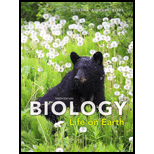
Concept explainers
Fill-in-the-Blank
Many predatory protists engulf prey with finger-ashaped extensions called__________. Protists that absorb nutrients from their surroundings may act as _________ of dead organic matter or as harmful ___________ of larger living organisms. LO1
To review:
The given blank space in the statement, “Many predatory protists engulf prey with finger-like extensions called __________. Protists that absorb nutrients from their surroundings may act as __________ of dead organic matter or as harmful __________ of larger living organisms.”
Introduction:
Protist refers to any eukaryote that is not an animal, a fungus, or a plant. Protists are categorized in a kingdom Protista that contains unicellular or unicellular-colonial organisms forming no tissues. Protists manifest diverse modes of locomotion, reproduction, and nutrition.
Explanation of Solution
Protists represent three modes of nutrition: ingestion of food, absorption of nutrients from their surroundings, or trapping solar energy through the process of photosynthesis directly. Protists are usually called predators that ingest food. For doing so, protists use finger-like extensions termed as pseudopods for engulfing prey. Tiny currents created by other predators sweep food particles inside the cell through mouth-like openings. The food is then digested by a food vacuole in both ways of ingesting food.
Nutrients are absorbed by protists from their surroundings directly. These protists may live freely or use bodies of other organisms to live in. protists that live freely are usually found in soil and other environments containing dead organic matter. They act as decomposers. Protists that live inside other or host organisms are parasites and cause harm to the host species.
Many predatory protists engulf prey with finger-like extensions called pseudopods. Protists that absorb nutrients from their surroundings may act as decomposers of dead organic matter or as harmful parasites of larger living organisms.
Want to see more full solutions like this?
Chapter 20 Solutions
Biology: Life on Earth
- The plant diseases downy mildew and late blight are caused by protists in the group__________. Slime molds are members of the_________ group.arrow_forwardThe root-like body part of the brown algae, which is used for anchoring the algal body: * thallus holdfast rhizoids stipe bladesarrow_forwardAlgae generally contain some type ofa. sporeb. chlorophyllc. locomotor organelled. toxinarrow_forward
- Gather data about the Protista - protozoa (Entamoeba histolytica), an organism from the Protista kingdom, from its classification system, their unique characteristics, habitat, food source, and a fun fact about that organism. Gather data about the fungi - Rhizopus stolonifer), an organism from the fungi kingdom, its classification system, its unique characteristics, habitat, food source, and a fun fact about that organism. Gather data about the Plantae (Mangifera indica), an organism from the plant kingdom, its classification system, its unique characteristics, habitat, food source, and a fun fact about that organism.arrow_forwardDinoflagellates are unicellular, marine protists. Dinoflagellates are bioluminescent, but only at night. During the day, they carry out photosynthesis similar to other autotrophs. At night, however, they bioluminesce every time they are disturbed. They are often seen in the wakes of ships at night. While the reason for this bioluminescence is not fully understood, many scientists concur that it is a form of self-defense. If small fish begin to feed upon the protists, the protists will begin to bioluminesce. These flashes of light in the dark water can alert larger fish and draw them towards the small fish, upon which they prey. By making the small fish vulnerable, the dinoflagellates are able to protect themselves. Based on the information above, a researcher decides to design an experiment in which she is testing how long it takes for dinoflagellates to recover after different amounts of disturbance. She maintains 10 containers of dinoflagellates with similar temperature, salinity and…arrow_forwardDinoflagellates are unicellular, marine protists. Dinoflagellates are bioluminescent, but only at night. During the day, they carry out photosynthesis similar to other autotrophs. At night, however, they bioluminesce every time they are disturbed. They are often seen in the wakes of ships at night. While the reason for this bioluminescence is not fully understood, many scientists concur that it is a form of self-defense. If small fish begin to feed upon the protists, the protists will begin to bioluminesce. These flashes of light in the dark water can alert larger fish and draw them towards the small fish, upon which they prey. By making the small fish vulnerable, the dinoflagellates are able to protect themselves. Based on the information above, a researcher decides to design an experiment in which she is testing how long it takes for dinoflagellates to recover after different amounts of disturbance. She maintains 10 containers of dinoflagellates with similar temperature, salinity and…arrow_forward
- Which parasitic protist evades the host immune system by altering its surface proteins with each generation? a. Paramecium caudatum b. Trypanosoma brucci c. Plasmodium falciparum d. Phytophthora infrstansarrow_forwardTrue or false? Some protists start out life with no nucleus.arrow_forwardSelect all the correct statements about protists. they are all autotrophs O they are in the domain prokarya O they are prokaryotic they are in the domain cukarya: 0t are cukaryotic. they are all heterotrophs they are in domain archaca aarrow_forward
- Algae is: Unicellular Colonial Filamentous All of abovearrow_forwardWhich of the following protists photosynthesize? Group of answer choices Autotrophs Heterotrophs Mixotrophsarrow_forwardWhich of the following organisms is an example of fungus-like protist? Group of answer choices water molds rhizopus truffles golden algaearrow_forward

 Concepts of BiologyBiologyISBN:9781938168116Author:Samantha Fowler, Rebecca Roush, James WisePublisher:OpenStax College
Concepts of BiologyBiologyISBN:9781938168116Author:Samantha Fowler, Rebecca Roush, James WisePublisher:OpenStax College Biology Today and Tomorrow without Physiology (Mi...BiologyISBN:9781305117396Author:Cecie Starr, Christine Evers, Lisa StarrPublisher:Cengage Learning
Biology Today and Tomorrow without Physiology (Mi...BiologyISBN:9781305117396Author:Cecie Starr, Christine Evers, Lisa StarrPublisher:Cengage Learning


